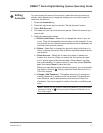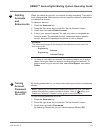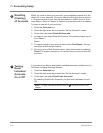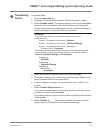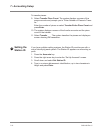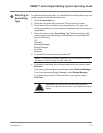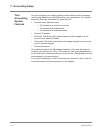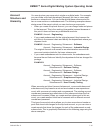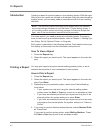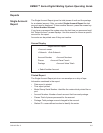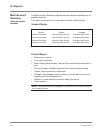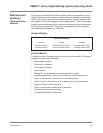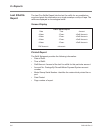
SV61162 Rev. C 7-15
DM800™ Series Digital Mailing System Operating Guide
Account
Structure and
Hierarchy
You can structure your accounts in single or multiple levels. For example,
you can divide a top level department (account) into two or more major
sections or subaccounts. You can further divide these subaccounts into
two or more sections or subsubaccounts. The following examples demon-
strate some of the ways in which you can structure your accounts.
• When you create a top level account, you can charge funds and pieces
to that account. This is the working (chargeable) account because at
this point it does not have any subordinate accounts:
EXAMPLE: Account - Engineering
• If you create subaccounts for the original account, they become the
end links in the account chain and identify the departments where you
disperse funds:
EXAMPLE: Account - Engineering, Subaccount - Software
Account - Engineering, Subaccount -
Industrial Design
The original Account now serves as an administrative account that
owns and contains totals for the lower subaccounts.
• If you create subsubaccounts for subaccounts, the subsubaccounts
become the end links and identify the departments that are charged for
postage.
EXAMPLES:
Account - Engineering, Subaccount - Software,
Subsubaccount - Software Testing
Account - Engineering, Subaccount - Software,
Subsubaccount -
Software Design
Account - Engineering, Subaccount - Industrial Design,
Subsubaccount -
Graphics and Layout
Account - Engineering, Subaccount - Industrial Design,
Subsubaccount - User Friendly Testing
When accounts are linked (account/subaccount, or account/subaccount/
subsubaccount) they become a set and are treated as one separate ac-
count, with one account number and one password. The existing account
number and password are rolled down to the subaccount when the first
subaccount is created. When you create another subaccount to this ac-
count, you create another linked set of accounts with a different account
number and password.
This type of account structure allows you to view accounts and create re-
ports that show total charges for the top level account, or you can view or
create reports that show the charges for each of the subaccounts or sub-
subaccounts. This is graphically illustrated on the following page using the
above examples.



